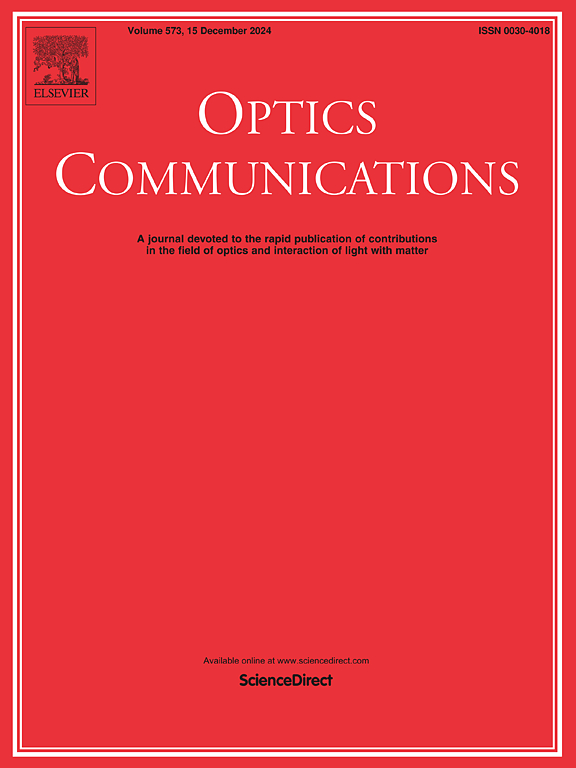Research on a novel packaging configuration for a wearable flexible FBG sensor
IF 2.5
3区 物理与天体物理
Q2 OPTICS
引用次数: 0
Abstract
To address the stretching range limitations of traditional flexible fiber Bragg grating (FBG) sensors, this paper introduces a novel wearable FBG flexible sensor that employs a cross-shape packaging and a sinusoidal configuration. Initially, three configurations were subjected to finite element analysis and strain monitoring with a displacement from 1 mm to 8 mm. The sinusoidal configuration exhibited the least strain for the same displacement and achieved the widest test range. Subsequently, the selected configuration was packaged and integrated, then, three unidirectional tensile tests were performed on a displacement table. The sensor's length extended to 7 mm, providing a larger scale compared to traditional linear FBG sensors. The results also indicated an average displacement sensitivity of 51.53 pm/mm with a maximum sensitivity error of 2.50 %, demonstrating excellent linearity and repeatability. Ultimately, utilizing the flexible FBG sensor, a wrist angle test was conducted and compared with data from an Inertial Measurement Unit (IMU). The findings revealed an angle sensitivity of 16.94 pm/°, a maximum sensitivity error of 2.42 % and a maximum zero drift rate of 0.41 %, demonstrating high accuracy and recovery. This lays the groundwork for future advancements in wearable applications. The novel packaging configuration of FBG sensor proposed in this paper improves test range of the traditional linear configuration, and has high test sensitivity.
可穿戴柔性光纤光栅传感器的新型封装结构研究
针对传统柔性光纤Bragg光栅(FBG)传感器的拉伸范围限制,本文介绍了一种采用十字形封装和正弦结构的新型可穿戴式光纤光栅柔性传感器。首先,对三种结构进行了有限元分析和应变监测,位移范围为1mm至8mm。在相同的位移下,正弦结构的应变最小,测试范围最宽。随后,将选择的配置进行打包和集成,然后在位移台上进行三次单向拉伸试验。传感器的长度扩展到7毫米,与传统的线性FBG传感器相比,提供了更大的规模。结果表明,平均位移灵敏度为51.53 pm/mm,最大灵敏度误差为2.50%,具有良好的线性和重复性。最后,利用柔性光纤光栅传感器进行了手腕角度测试,并与惯性测量单元(IMU)的数据进行了比较。结果表明,角度灵敏度为16.94 pm/°,最大灵敏度误差为2.42%,最大零漂移率为0.41%,具有较高的精度和回收率。这为可穿戴应用的未来发展奠定了基础。本文提出的新型光纤光栅传感器封装结构提高了传统线性封装的测试范围,并具有较高的测试灵敏度。
本文章由计算机程序翻译,如有差异,请以英文原文为准。
求助全文
约1分钟内获得全文
求助全文
来源期刊

Optics Communications
物理-光学
CiteScore
5.10
自引率
8.30%
发文量
681
审稿时长
38 days
期刊介绍:
Optics Communications invites original and timely contributions containing new results in various fields of optics and photonics. The journal considers theoretical and experimental research in areas ranging from the fundamental properties of light to technological applications. Topics covered include classical and quantum optics, optical physics and light-matter interactions, lasers, imaging, guided-wave optics and optical information processing. Manuscripts should offer clear evidence of novelty and significance. Papers concentrating on mathematical and computational issues, with limited connection to optics, are not suitable for publication in the Journal. Similarly, small technical advances, or papers concerned only with engineering applications or issues of materials science fall outside the journal scope.
 求助内容:
求助内容: 应助结果提醒方式:
应助结果提醒方式:


